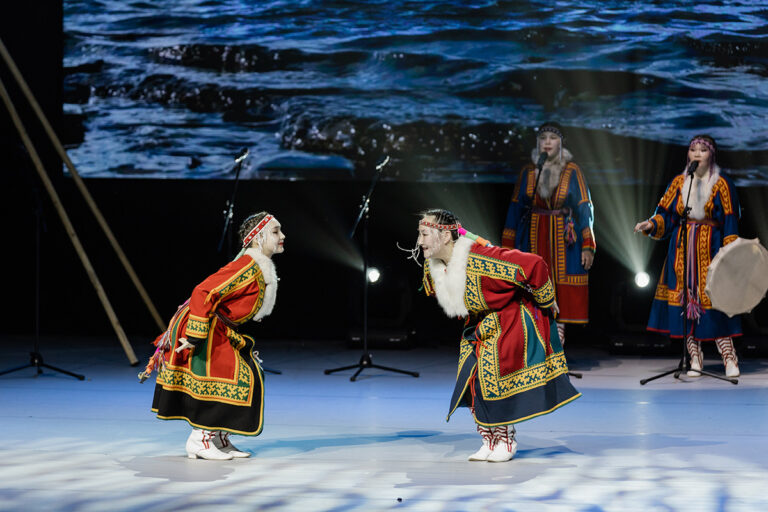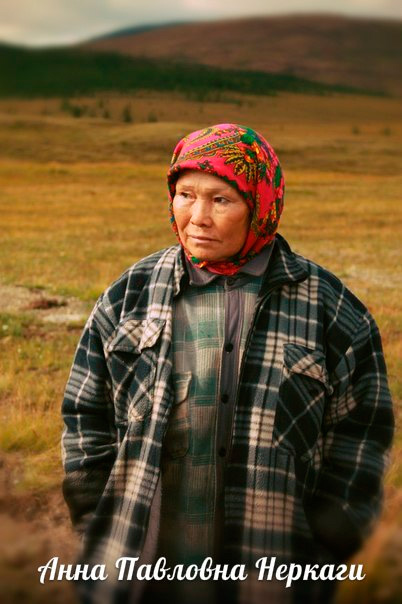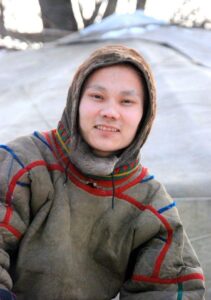Nenets


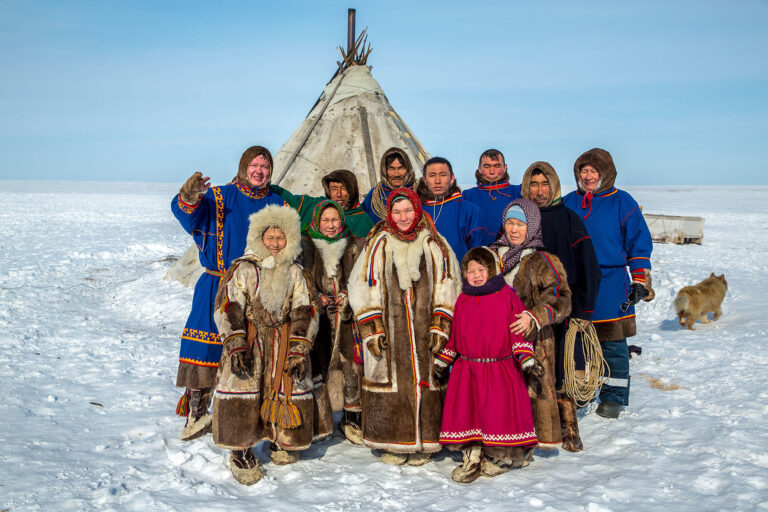
HISTORY AND ORIGIN
The Nenets call themselves nenei nenets’ (literally – Nenets man, Nenets man). Another self–designation - khasava ("man") is found in all Yamal Nenets, in some Gydan and along with the self-designation "Nenets" in some groups. Self-designation "Nenets" has come into use in 1930s.
Initially, the Nenets were called Samoyeds or Samoyeds-Yuraks. Mention of this is in the oldest Russian chronicle "The Tale of Bygone Years", dating back to the beginning of the XII century.
Of the indigenous small-numbered peoples of the Russian North, the Nenets are the most numerous. According to statistical data of the All-Russian Population Census of 2010, there are total of 44640 Nenets in the Russian Federation. They live in the Nenets Autonomous Area, Leshukonsky, Mezen and Primorsky districts of the Arkhangelsk Region, northern districts of the Komi Republic, Yamalo-Nenets and Khanty-Mansi Autonomous Area, Tyumen Region, Taymyr (Dolgan-Nenets) Autonomous Area of the Krasnoyarsk Territory. Of these (according to the results of the 2010 census) the number of people that live in the Tyumen Region is 31 621 and in the Yamalo-Nenets Autonomous Area - 29 772. The Nenets are divided into two groups – tundra and forest.
Tundra Nenets, who live in Yamal, Taz, Priuralsky, Nadymsky districts, are mostly settled on the territory of the Yamalo-Nenets Autonomous Area. Forest Nenets on the territory of the Yamalo-Nenets Autonomous Area are few and live in the Purovsky district. In addition to this territory, forest Nenets also inhabit the eastern slope of the Pur-Taz watershed. The Nenets lead their history from the arrival of their ancestors in the taiga zone and further progress to the shores of the Arctic Ocean.
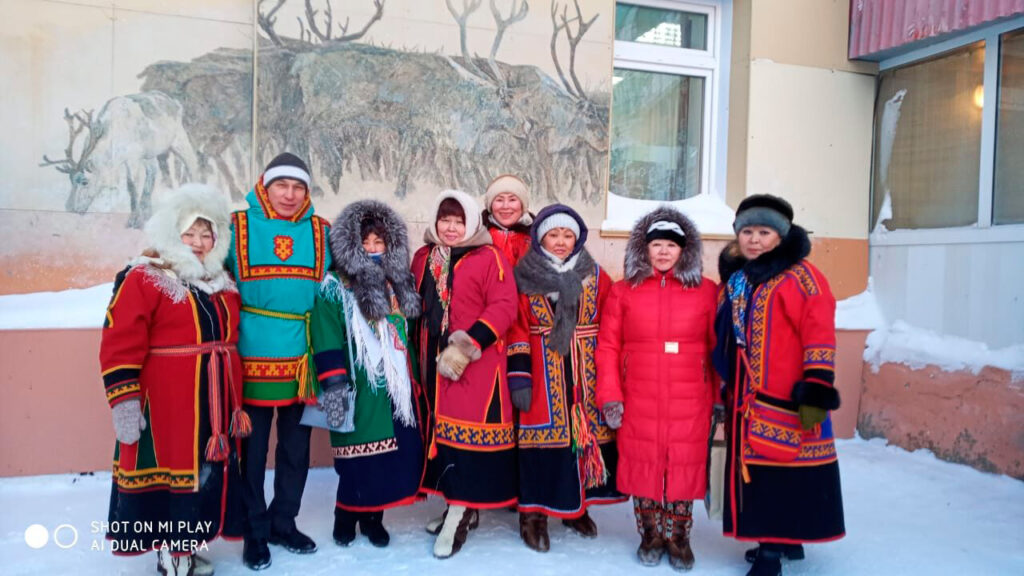

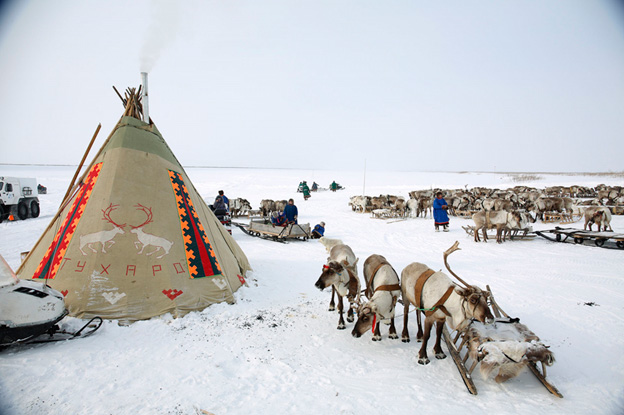
There are several hypotheses about the origin of the Nenets. Many scientists believe that the South Siberian tribes of Sayan teritories played a big role in the formation of the ethnicity.
The arrival of the Nenets on the territory of the current habitat dates back to the first millennium. The Samoyed clans of southern Siberia and the aboriginal population of tundra and forest tundra zones took part in their ethnogenesis. Under the pressure of the Huns, Turks and other warlike nomads, the Samoyedic-speaking ancestors of the Nenets, who inhabited the forest-steppe regions of the Irtysh and the Volga region, the taiga of the Middle Ob region, moved north into the taiga and tundra regions of the Arctic and Circumpolar regions. There they assimilated with the aboriginal population and became part of the future Samoyed peoples. The Nenets themselves called these aborigines sihirtya (sihirtya, sirte), they fished and hunted sea and land animals. In the Nenets legends, the sikhirty appear as people of small stature. After the arrival of the Nenets, they allegedly went underground. Later, the Nenets also included Ugric and Nenets groups.
All Nenets clans were divided into two phratries. Scientists have established that the genera of the first phratry are descended from the genus Haryuchi, and the second from the genus Vanuito. In the XVII—XVIII centuries, began the division of the phratries of large genera into the so-called yerkars of small genera. The process of fragmentation was caused by the development of reindeer husbandry, an increase in living standards and population growth.
These clans occupied special territories and formed new ones, which, however, continued to trace their origin from two progenitors. By the beginning of the XX century. the Nenets had up to a hundred such groups.
Russians advanced widely to the east in the XVI century, the imperial government built a number of strongholds in the Nenets territories – stockaded towns, towns (Berezov – 1593, Obdorsk – 1595, Surgut – 1594, Mangazeya – 1601, Turukhansk – 1607). Regular trade relations between the Nenets and Russians began here. New technologies and household items have penetrated into the everyday life and production of the Nenets: firearms, nets, metal products, fabrics. Since the XVII century, the ancestors of modern Nenets have been in long-term contacts with the Komi, Ents, Khanty, Selkups, and Russians, in connection with which their culture is undergoing certain changes. At this time, the Nenets are further adapting to the conditions of the Arctic.
The culture and way of life of small peoples have been subjected to severe deformations in recent years, as a result of which traditional knowledge, languages and national dignity have been lost.
Currently, after collectivization, the resettlement of many Nenets to settlements and the active development of oil and gas-bearing areas, the traditional way of life of the Nenets is under threat, but the language is preserved relatively well, especially among those Nenets who still live outside villages.

LANGUAGE
The Nenets language belongs to the Samoyed group of the Uralic language family and there are two dialects – tundra and forest. Each of them breaks up into a number of dialects. The main differences between dialects relate to the sound composition; some differences are noted in the field of vocabulary and morphology. Lexical differences between the dialects of tundra and forest Nenets consist in the fact that in the vocabulary of the latter there are numerous inclusions of Selkup and Khanty words. A number of elements in the language of the forest Nenets connect it with the languages of the Ents and Nganasans. The tundra dialect splits into western (Kaninsky and Malozemelsky) and eastern (Bolynezmelsky, Yamal and Tazovsky) dialects. Tundra is spoken by the bulk of the Nenets population, while forest is spoken by a small group in the southern regions of the Yamalo–Nenets District.
WRITTEN LANGUAGE
Nenets writing was created in 1932 on the basis of Latin graphics. G. N. Prokofiev prepared the first Nenets primer "New Word". The primer was based on the dialect of the Tundra Nenets. Subsequently, a grammar, grammar reference books, manuals and books for reading in the Nenets language were developed. 1937 the Nenets writing was translated into Russian graphics.




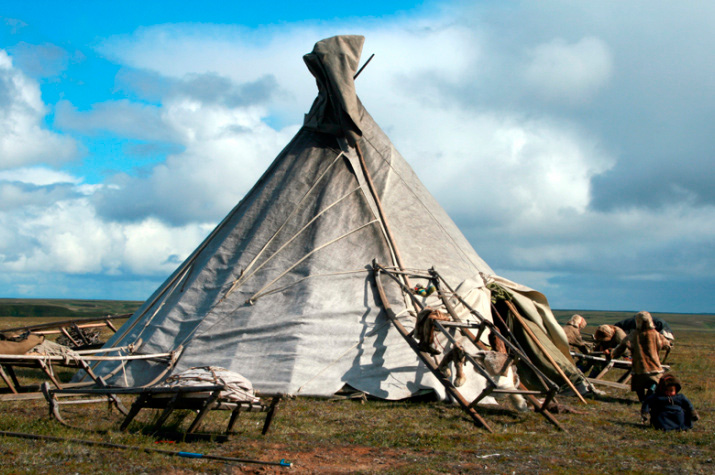
TRADITIONAL FARMING
Reindeer husbandry. The main occupation of the Nenets is reindeer husbandry. Their whole life is connected with deer.
These animals are used as traction force for sledding and cargo transportation, deer meat is used for food, and skins are used to cover the chum – the traditional dwelling of the Nenets. Year-round grazing of animals is carried out under the supervision of shepherds and reindeer herding dogs.
Reindeer sleds are used to move in the tundra and forest tundra. The Nenets sleds (khan) are made of of spruce or birch. They drive fast enough. Sleds vary depending on their purpose and are light or cargo. Light sleds used by men are called men's sleds (khasava khan), light sleds that are assigned to women – female (ne khan). In turn, men's sleds are made of two types – summer and winter. Cargo sleds are represented by three types: rigid cargo, reinforced cargo, vandey. All of them differed in size and some design features, as well as in purpose. There were made up of cargo sleds whole wagons (argish). At the head was a light sled, a pair of deer harnessed to a cargo sled was tied to the back by the neck. They control the chorea. A horey is a pole up to 5 meters long, with a bone ball at the end or an iron tip. The horey is squeezed in the left hand, and the reins are held in the right. The harness is decorated with copper rings, bells and tassels.
Fishery. Fishing was of great importance in the Nenets traditional farming, especially in the lower reaches of the Ob, Nadym, Pura, Taz and Yenisei. Among the forest Nenets of the lower reaches of the Pura and Nadym rivers, it was the main occupation. The main commercial fish species are sturgeon, whitefish, salmon, partly ide, and navaga. They fished with different nets and constipations. Seines 80-100 m long were used everywhere, which 3-4 people could easily cope with. Nets that were placed across the river were also common. They were also used at the beginning of winter for ice fishing. The Nenets blocked small rivers with fences made of poles driven into the river bottom. In the "windows" of the fences, i.e. in the passages between the poles, "muzzles" were inserted – traps woven from twigs. Fishing with the help of fences was practiced in winter.
Hunting. Hunting was and remains one of the most important occupations of the Nenets. The main objects of hunting, in addition to wild deer, were arctic fox, fox, hare, ermine. Occasionally they hunted wolverine, beaver, otter, wolf, white and brown bear. Fur-bearing animals are hunted with the help of wooden traps-mouths, iron traps, loops. From time immemorial, the Nenets have been producing white partridges and geese during molting, capercaillie.
The Nenets are a skilled people. earlier, every man owned carpentry, woodworking and leather craft, was able to knit fishing nets, make sleds, make jewelry and small sculptures. Of the tools, only axes and saws were purchased from the Russians, the Nenets made everything else themselves.
Nenets women are engaged in the manufacture of deer skins and fur-bearing animals, sewing clothes, bags, tires of chum. Clothes and utensils are decorated with fur mosaics (made of white and dark-colored stones), beaded jewelry is woven, deer hair is embroidered under the neck, and wood carvings are carried out.
TRADITIONAL DWELLING
The traditional dwelling of the Nenets is the chum (raw-hide tent). It is adapted to the conditions of a nomadic lifestyle. Such a dwelling, designed for several people, can be easily built almost anywhere. In the language of the Nenets, the chum is called – "mya". For the Nenets, it is the center of the whole life of the family, which is perceived as the whole world. The place for parking and installation of the chum is chosen by men. At the same time, there is a certain order. First of all, the place is chosen taking into account the time of year. In winter, the chum is placed, if possible, in places sheltered from the wind, in summer, on the contrary, in open ones. It is also taken into account that the entrance should not look in the direction from which the chum came. The chum consists of 30 – 50 (depending on the size of the chum) poles, which are wrapped with deer skins – nyukas. The main element of the chum is the pole symsy, which is sacral for the Nenets.
A bonfire used to be lit in the center of the chum, now a modern stove is used. A plank with a hook for a kettle or boiler was reinforced over the hearth, sleeping places were placed on both sides of it, and objects of pagan worship were placed against the entrance, later icons, as well as clean dishes. With each movinf, the chum is dismantled, tires, beds, poles, dishes are put on special sleds.
CUISINE
From century to century, showing natural ingenuity and courage, the Nenets managed to resist the merciless nature, learned to take from her everything necessary for life. The first necessity of the Nenets was food. Cooking and preparing food for the future has always been the business of women.
The main food product is the meat of domestic deer. It is eaten both boiled and raw with blood. The meat of a freshly killed deer was considered the most delicious dish. Pieces of it were dipped in still warm blood, seized with teeth and cut off with a quick movement of the knife from the bottom up directly at the lips. Raw meat containing a large amount of vitamin C and warm blood served as an anti-scurvy agent. Young deer antlers singed on a bonfire are considered a treat.
In the diet of the Nenets there are also exotic dishes, such as fresh liver, kidneys, deer blood. Delicious dishes are tongues, heart, rennet. In addition to venison, beef and pork, sea animal meat, as well as freshwater fish are used here: whitefish, pike, nelma. Fish is dried, fried, boiled, smoked, eaten raw and frozen.
The Nenets' favorite dishes are: so called stroganina is slices of frozen fish (usually sterlet, muksun, nelma) and meat of domestic or wild deer, cut into thin slices with a sharp knife, soup with flour, pancakes with blood, stewed meat with pasta. Ice cream meat and fish are considered a delicacy, the best treat for guests.
It is common to cook yukola – sun-dried fish. Traditionally, yukola is prepared in large quantities for the winter.
The melted fish oil was one of the favorite delicacies: during a meal they dip into a fish oil a flatbread and a piece of fish, consumed in its pure form or mixed with berries. Bread is preferred more rye.
The favorite drink of the population of the North is tea, which is sometimes brewed on local herbs (rosebay willow-herb, Arctic raspberry etc.), as well as compotes and fruit drinks from cranberries, cloudberries, blueberries, jelly from starch and berry juice.
In the XXI century, purchased products have firmly entered the everyday life of the Nenets: flour, sugar, tea, pasta, cereals, butter.
Articles
Персоналии ненцов




